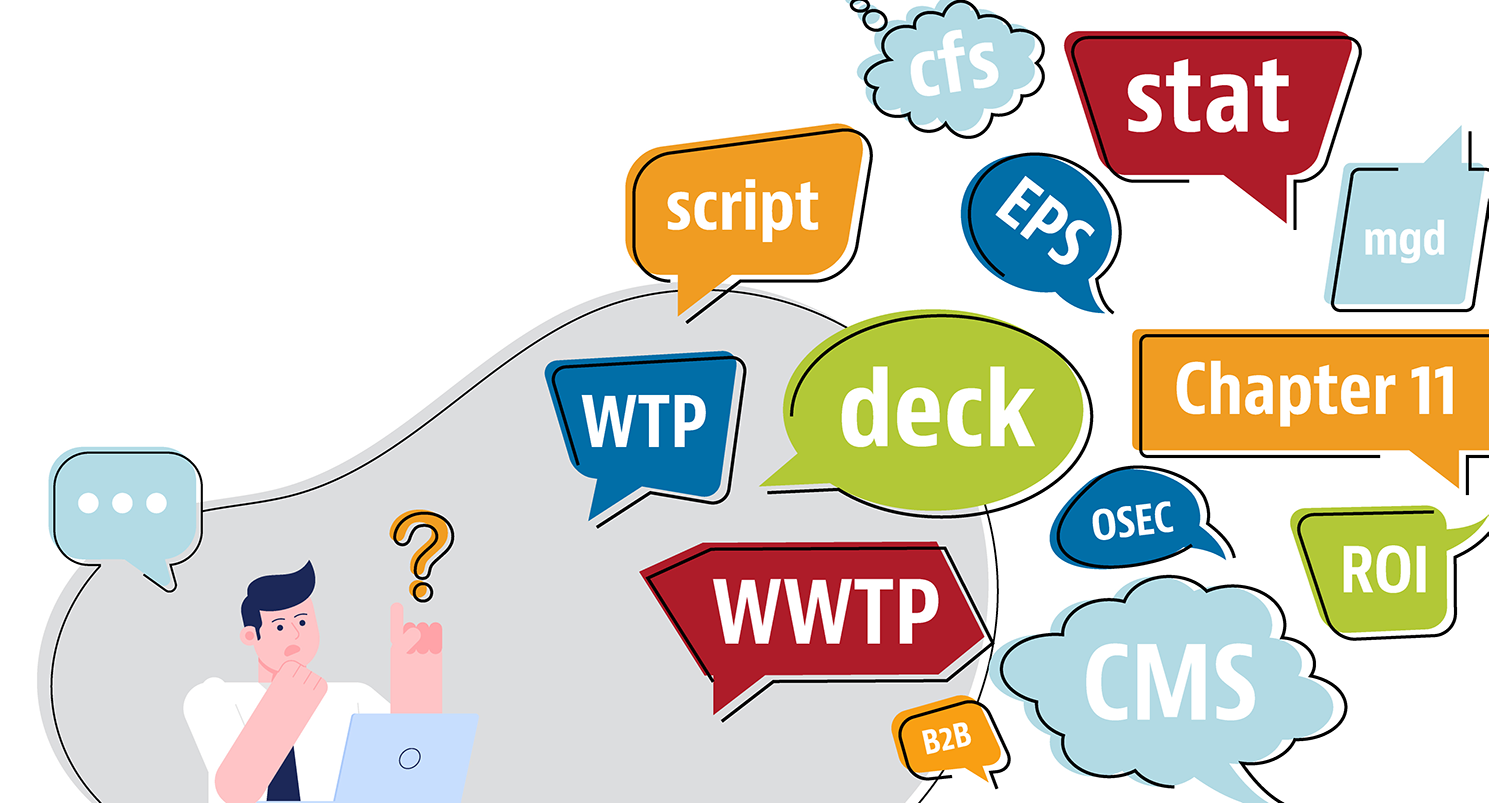Every industry has jargon — commonly used words or expressions that are difficult for non-industry insiders to understand. Many times, we don’t even know we’re using it. If the word or phrase’s meaning is clear to me and my coworkers, everyone else should understand it, right? Wrong. By making that assumption, you’re preventing part of your audience from understanding your message.
It’s hard to recognize jargon until you’re confronted with it in a situation where you’re struggling to understand a message. It could be in a medical or legal setting where a doctor or lawyer is trying to explain something serious, but you feel like they’re speaking another language. You may be too self-conscious to say, “Please explain it in simpler terms!”
When I first arrived at AE2S, I was shocked by the number of acronyms used by the engineers. I still regularly Google engineering terms and acronyms so I can “translate” them into something a non-engineer will understand. Although we may not realize it, every department has its own jargon — information technology (better known as IT), accounting, and even the communications team! It took a moment for me to realize it’s not obvious to others outside my field that a news release is written differently than an article which is different than a blog which is different than a social media post.
It’s important that we recognize the jargon we use and make a conscious effort to either remove it or explain it when speaking to people outside of our core group, so our audience doesn’t struggle to understand us. Internally, this can mean the difference between your coworkers easily understanding the latest IT, human resources, and accounting initiatives OR receiving lots of questions and requests for clarification because they just didn’t get it.
Eliminating or explaining jargon is also important with regards to describing complex processes or infrastructure projects to decision-makers and the general public. How can the people who will pay for multimillion projects support major expenditures if they don’t understand the project?
So, how do you prevent jargon from hijacking your message? When communicating with anyone outside of your specialty, ask yourself two questions:
- Would my spouse/parents/non-industry friends easily recognize the words and understand the concepts I’m talking about? If not, you need to use easier to understand words or ideas.
- Example: “The flood diversion project is built for 33,000 cfs.” To be clearer, you could add an explanation: “The flood diversion project is built for 33,000 cubic feet per second. One cubic foot is similar in size to a basketball. Instead of water, imagine standing on a riverbank and seeing 33,000 basketballs flowing past you each second.” This gives your audience a mental picture along with an explanation of a complex idea.
- Would a photo or graphic help explain what you’re talking about? The ability to see an illustration of a complex idea can help people understand what you’re talking about. Props, professionally designed graphics, or photos and videos are ideal. However, a simple drawing using paper and pencil, or a whiteboard and marker can also help get your point across.
If you’re able to identify the jargon that crops up in your vocabulary and consciously use more common words or ways to help your audience visualize what you’re talking about, it will increase their ability to understand your message. If you have questions about “translating” your jargon into English, feel free to reach out to Heather.Syverson@ae2s.com.

